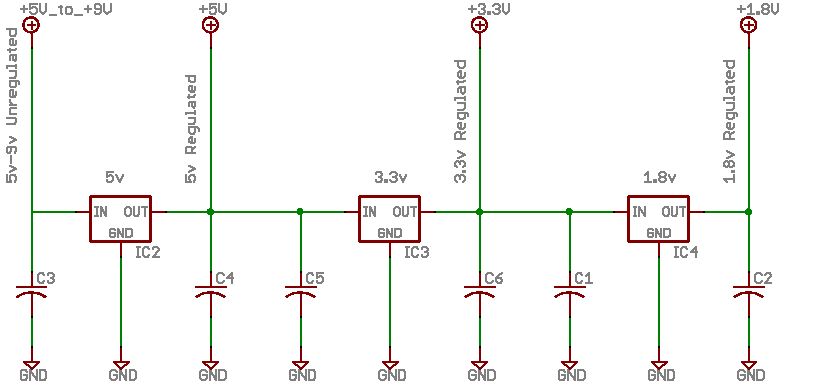The output of one voltage regulator feeding the input of the next?
I'm working on something that will use an ARM9 microcontroller, which uses 1.8v, but will also use a Prop at 3.3v and various other components at 5v. The input voltage will be between 5v and 9v, unregulated from a battery. I don't want to hook up each voltage regulator directly to the battery. Feeding 9v to the 1.8v regulator means that 7.2v (80%) is being wasted as heat. This is totally unacceptable and I can imagine that the battery will not last long on such a set up.
What I want to do is shown in the attached image. Is this acceptable?
Post Edited (MarkS) : 9/21/2007 12:55:34 AM GMT
What I want to do is shown in the attached image. Is this acceptable?
Post Edited (MarkS) : 9/21/2007 12:55:34 AM GMT



Comments
▔▔▔▔▔▔▔▔▔▔▔▔▔▔▔▔▔▔▔▔▔▔▔▔
There's nothing like a new idea and a warm soldering iron.
The typical 3-terminal regulator needs a voltage at its input that is over and above what it must output by a certain amount or it will fail to regulate.
LDO (low drop out) regulators need less "headroom".
Your basic 78xx or LM340 type may need anywhere from 1.5 to 3 volts overhead (depending on manufacturer and other things).
An LDO type of regulator can work with very low headroom 0.5 to 1 volt is typical - this helps also with power dissipation
Check the data sheets of the regulators you plan to use to be sure they will work as intended.
▔▔▔▔▔▔▔▔▔▔▔▔▔▔▔▔▔▔▔▔▔▔▔▔
- Rick